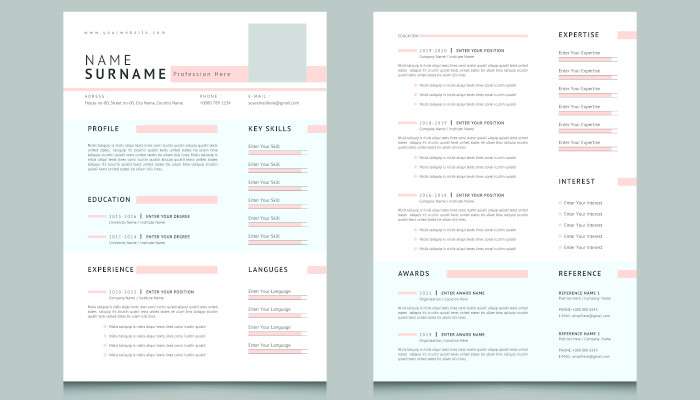
In today’s competitive job market, a well-written resume is your ticket to securing an interview for the job you desire. A resume is a snapshot of your qualifications, experience, and skills, allowing employers to assess your suitability for a position quickly. Whether you’re a recent graduate, changing careers, or looking for a promotion, mastering the art of resume writing is crucial. This comprehensive guide will tell you what to include in your resume and provide a step-by-step process to help you create an impactful resume.
What to Include in Your Resume
Any quality resume is only as good as the content you include. Before you begin formatting and drafting your CV, ensure you have all this information ready to include.
1. Contact Information
Begin your resume with your full name, phone number, professional email address, and LinkedIn profile (if applicable). Make sure this section is prominently displayed at the top of your resume.
2. Professional Summary or Objective Statement
Craft a concise and compelling summary highlighting your relevant experience, skills, and career goals. Tailor this section to align with the specific job you’re applying for.

3. Work Experience
List your work history chronologically, starting with your most recent position. Include the company name, job title, dates of employment, and a brief description of your responsibilities and achievements. Quantify your accomplishments whenever possible to showcase your impact.
Depending on the position, it may also make sense to order your work experience based on its relevance to the position for which you are applying. For example, if your most recent job was in retail, but your job before that was an internship at a law firm, you should list that first if you are applying for a paralegal position.
4. Education
Provide details about your educational background, including the institution’s name, degree earned, and graduation date. Mention any relevant coursework, academic honors, or extracurricular activities demonstrating your skills or dedication.
5. Skills
Highlight hard and soft skills relevant to the job you’re applying for. Include technical proficiencies, industry-specific knowledge, and transferable skills such as communication, teamwork, and problem-solving abilities.

6. Certifications and Training
If you have obtained any certifications or undergone relevant training, include them in this section. This demonstrates your commitment to professional development and can make you stand out among other candidates.
7. Achievements and Awards
If you’ve received any recognition, awards, or notable achievements related to your field, include them in a separate section. This highlights your exceptional performance and adds credibility to your resume.
8. References
If you have great references, include them at the end of your resume or as a separate page. You can list between two and five references, but let any reference you list know that you’ve put them down on your resume so they aren’t caught off guard if the potential employer contacts them.
A Step-by-Step Guide to Writing Your Resume
Step 1: Research
Before starting your resume, thoroughly research the company and the specific job requirements. Tailor your resume to showcase how your skills and experience align with their needs.
Step 2: Choose a Format
Select a resume format that best suits your experience and industry. Common formats include chronological (highlighting work history), functional (emphasizing skills), or a combination.

Step 3: Organize Sections
Structure your resume using clear headings and subheadings. Ensure a logical flow and make it easy for employers to find the information they seek.
Step 4: Format and Design
Choose a clean and professional layout with legible fonts and consistent formatting. Use bullet points, headings, and white space effectively to improve readability.
If you want to use a pre-formatted template, there are many online resources to help you out. Canva has some great free resume templates, as do websites like Resume Builder. These templates can be especially beneficial if you search and locate industry-specific options.
Step 5: Tailor Your Content
Customize each resume you send out by incorporating keywords and phrases from the job description. Highlight the skills and experiences most relevant to the specific role you’re applying for.

Step 6: Write Concisely
Keep your sentences clear, concise, and accomplishment-oriented. Use bullet points to present information in a reader-friendly manner. Avoid lengthy paragraphs or unnecessary details.
Step 7: Use Action Verbs
Start each bullet point in your work experience section with an action verb to convey your achievements and responsibilities. Use verbs like “managed,” “created,” “implemented,” or “achieved” to showcase your proactive approach.
Step 8: Proofread and Edit
Review your resume multiple times to eliminate spelling, grammatical, or formatting errors. Ask a trusted friend or mentor to provide feedback and suggestions for improvement.
Step 9: Save and Submit
Save your resume in a widely compatible format, such as PDF, to ensure its appearance remains consistent across different devices and software. Follow the employer’s instructions through email, online applications, or a resume tracking system when submitting.

Go Get The Job You’ve Always Wanted
A resume is the first step to landing your dream job, but it isn’t the only step you need to take. You also need to prepare for and nail your interview. So, make sure you grasp job interview etiquette well and look your very best with a solid interview day beauty routine.
Image credit: Pexels











